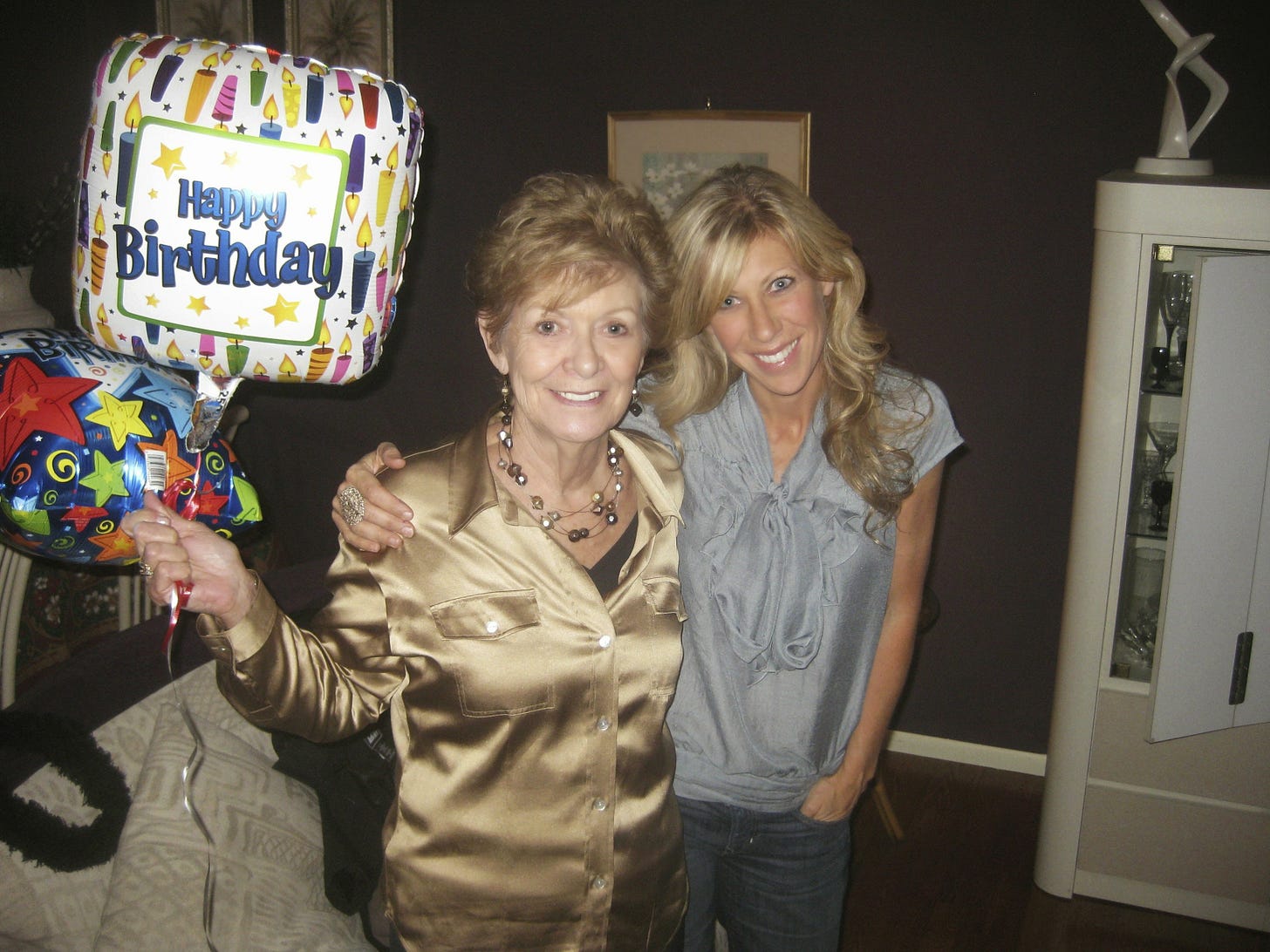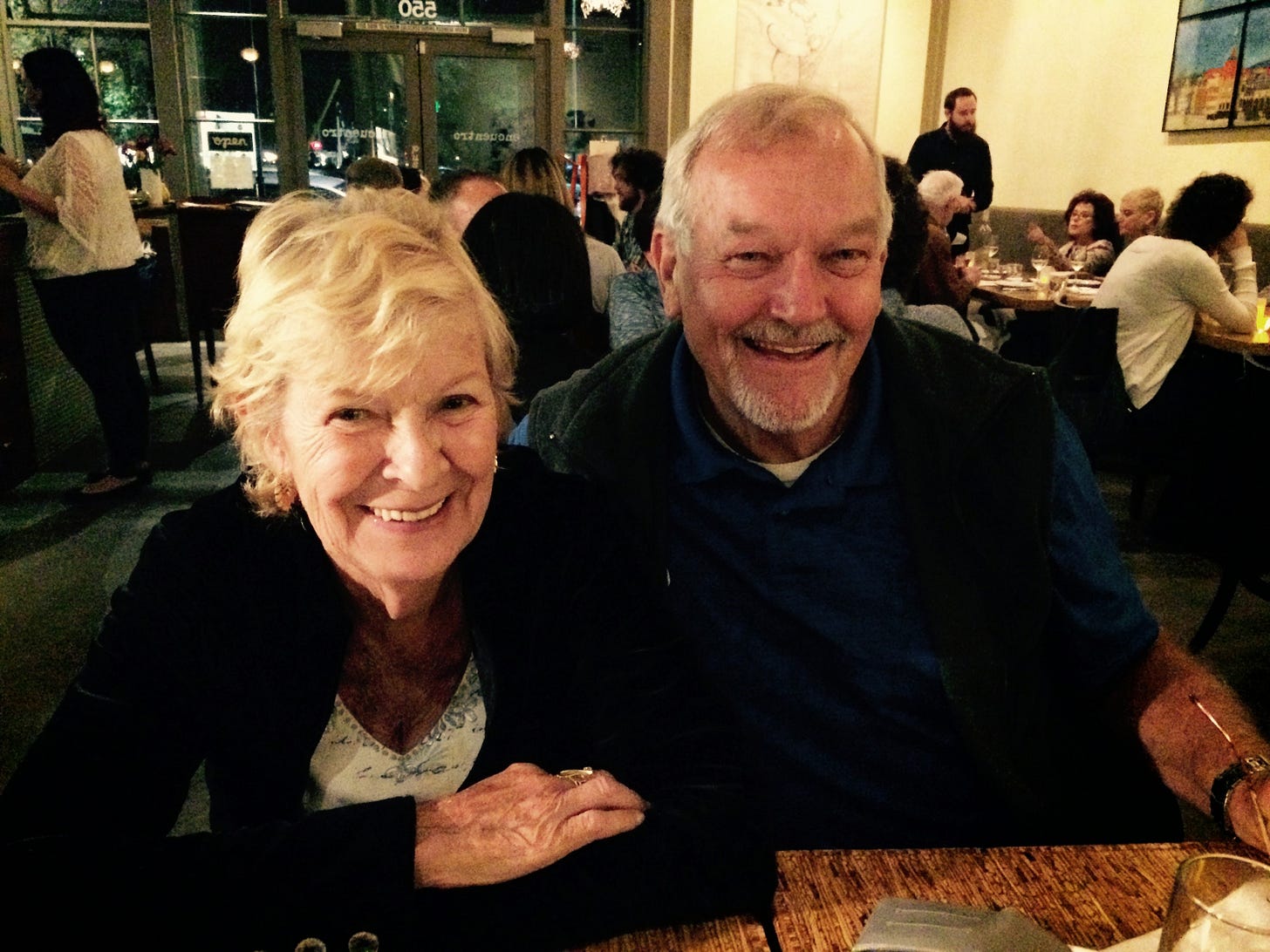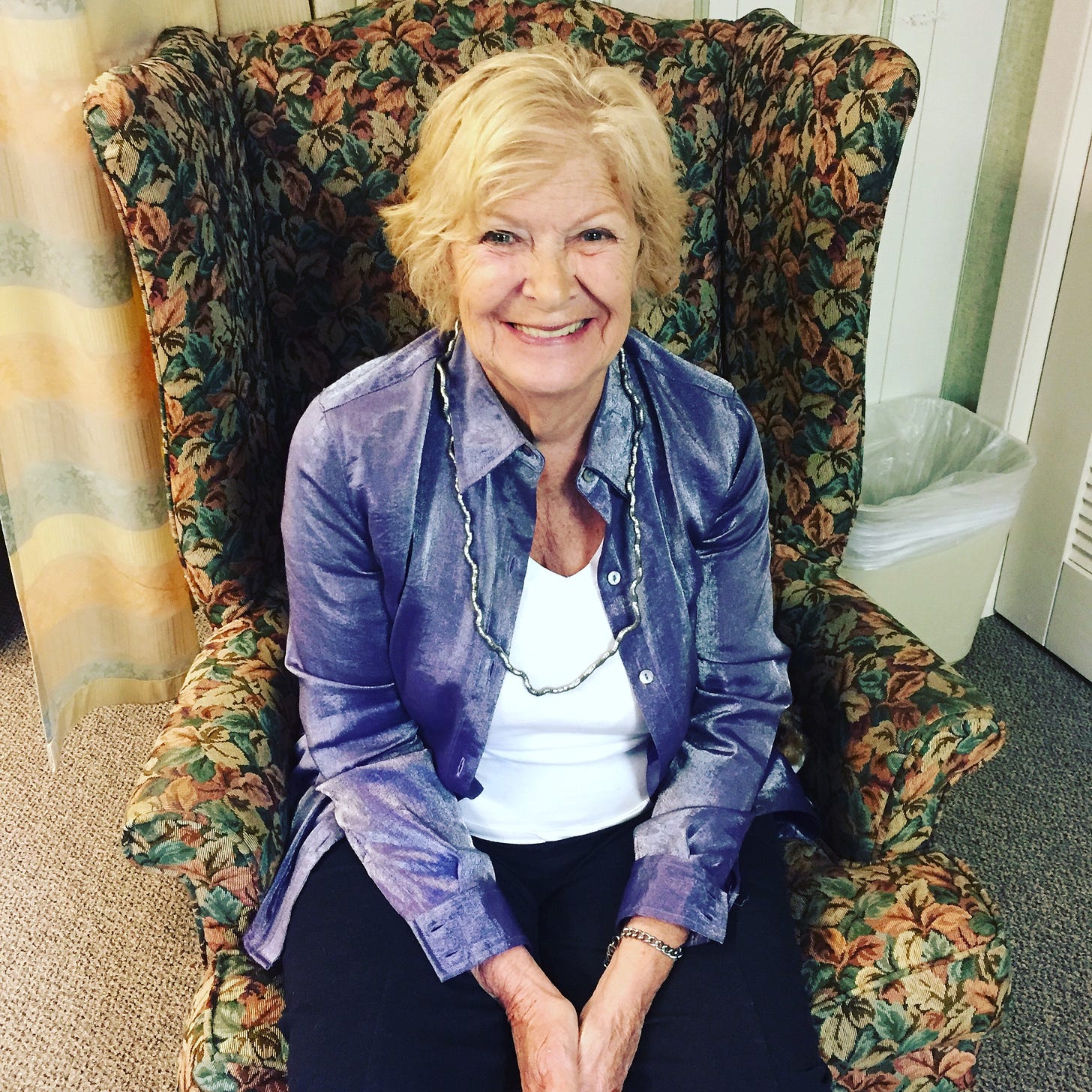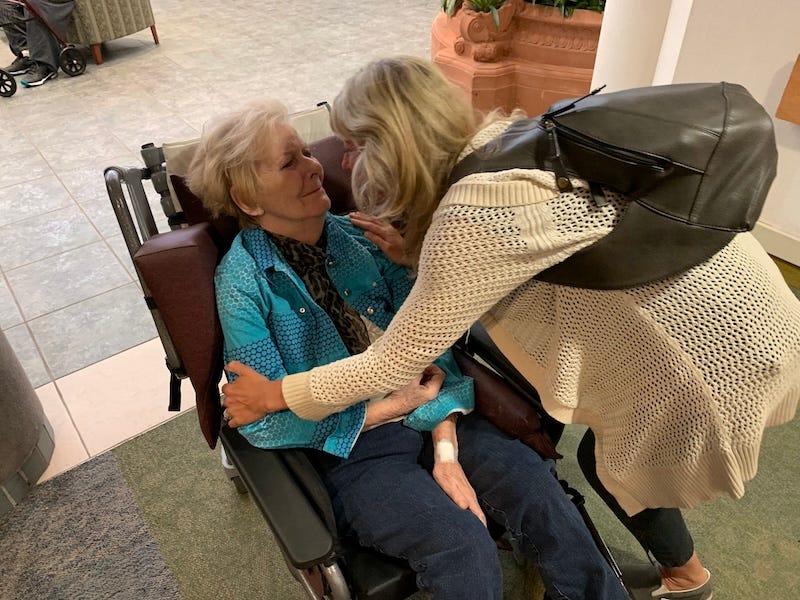The Daughter I Became
How I Let Go of Expectations and Found My Mother
Thank you for reading about my mother’s death and the challenge of grieving without the usual rites and rituals. In honor of Mother’s Day, I want to share a little more about Arlene—the decades of difficulty in our relationship, the realization I had about how to begin healing it, and how I was able to help her find her voice when she could no longer speak.
The Struggle
My relationship with my mother was always a struggle. Each of us had expectations of the other that neither could possibly meet. And for decades, we rode a roller coaster of hope, frustration and disappointment.
During one of the worst of those times, someone close to me observed that my mother and I clearly loved each other very much. I was incredulous. I had just described to her how misunderstood and hurt and un-mothered I felt. How could that possibly be translated into love? "Because neither of you give up," my friend said. "Despite how much you struggle, you keep going back. If you didn't care, you wouldn't even try."
It took 20 years for that to really sink in, but it was a strange comfort whenever I was upset with my mother. Anger, after all, was better than indifference.
For a long time, one of my greatest fears was that my mother would die before I resolved my issues with her, leaving me with regret and remorse. Of course, perceiving her as the problem that needed fixing, I suppose I figured that resolution would come in the form of her miraculously becoming the mother I wanted her to be.
Not surprisingly, that never happened, but something better did.
I came to realize that the problems in our relationship had nothing to do with her and everything to do with my expectations of her. And so I decided to stop expecting her to be the mother I wanted her to be and decided instead to be the daughter I wanted to be — the daughter I could be proud of. Rather than lamenting about what I wasn't getting from her, I started giving those things to her.
And remarkably, the resolution came. With all of my expectations stripped away, all that remained was the love my friend perceived so many years before.
I decided to stop expecting her to be the mother I wanted her to be and decided instead to be the daughter I wanted to be.
The Stroke
We don’t know when Arlene had the stroke — probably during the surgery to replace one of her heart valves in 2014. I remember talking to her after she was home from the hospital recovering at her sweetheart’s house (my mother fell in love with Paul when she was 77), and she talked about how there were words she wanted to say…but couldn’t get them to come out of her mouth.
It took months for me to understand what was happening. Everyone—except Paul—was convinced it was Alzheimer’s, but the symptoms didn’t align. I consulted Alzheimer’s organizations, read books, took diagnostic assessments designed to identify the disease in loved ones, and scoured every resource I could find—but nothing fit.
Then I watched a video of a young woman with aphasia—a condition caused by damage to the part of the brain that controls language, making it difficult to speak. I watched another. And another. And I cried. It was exactly what my mother sounded like.
I arranged speech therapy for her, and expressive aphasia was confirmed. By the time we had the diagnosis, the condition was already quite advanced—she was rapidly losing her ability to speak, and writing was also difficult. Rebuilding the damaged language center of her brain would have required sustained effort and vigilance, but she simply didn’t have the capacity to give that kind of energy. She continued therapy, but the aphasia continued to worsen.
The Support
Paul stayed by her side, but it became harder for her to stay connected with others. She couldn’t call anyone on her own. She still lived in her NJ condo but spent more time at Paul’s. Her social life, which had always meant so much to her, began to fade, and I could see her frustration mounting, along with glimpses of depression. I was thrilled to find a day center near her, where she could have social interaction and participate in activities. On her first day, I felt like a mother dropping off her child at kindergarten. I watched from where she couldn’t see me and checked on her every ten minutes.
She started going three times a week.
Her last visit to California to stay with me and David was in August 2015. She was 80 years old—and beautiful. She struggled to speak, and walking was becoming harder. (Amazingly, she still made it up the 100 steps to our front door!)
By then, I had learned a lot about expressive aphasia, which is what my mother had. It meant she could understand words that were said to her but struggled to find and form the words she wanted to say. That’s different from receptive aphasia, where the ability to comprehend language is impaired. I knew she understood what was being said to her, which made it especially painful when people assumed otherwise—speaking to her condescendingly or directing questions to me instead of to her as if she wasn’t there.
And then it hit me: while she couldn’t speak fluently, she could still read.
So together, we wrote a short script, and I set up a teleprompter so she could record a message to her friends. The result was astonishing. There’s no way she could have spoken those words fluidly on her own—but reading them, she was clear and confident. I sent the video to Paul, who was deeply moved, and I knew that this had to become part of her ongoing therapy.
In 2017, Paul, my mother’s primary caregiver, fell and sustained injuries that required hospitalization and months of in-patient physical therapy. I rushed back out to NJ and spent a very difficult week coming to terms with the fact that she needed round-the-clock care, which Paul had been gallantly providing for her all this time but was unable to do so now that he was recovering from a broken arm, broken clavicle, and sprained ankle.
After countless phone calls and research, I found a nursing home just 20 minutes from Paul’s house that had an unexpected opening and could provide the care my mother needed. Still, moving her into a nursing home was one of the most difficult things I’ve ever had to do. I flew back often and arranged for video calls with her every week.
She received stellar care but continued to decline until she could no longer speak, walk, feed herself, or manage any self-care. Swallowing also became difficult, and she lost a lot of weight. In 2019, she entered hospice care.
Then came the Covid-19 pandemic.
The Love
She continued to weaken, and while I could see her in our video calls, I was unable to fly to NJ to be with her in person. I have so many regrets that I know she wouldn’t want me to carry. If she were here, she’d touch my face and say, “Don’t cry, Col,” though I know she’d be crying, too.
I’m so grateful she heard me say “I love you” many times over the years—even when she couldn’t say it back. I know she heard me and understood and felt it. I’m certain she heard it just days before she died when I told her on our video call that it was okay for her to let go. I told her I loved her and that she was a good mother, and then…with her eyes closed, she lifted her arm and reached toward the screen, toward my voice.
On April 21, 2020 at 1:08 a.m. EST, my mother died. I know the time because she wasn’t alone when she passed. The night nurse was with her and held her hand as she breathed her last breath.
Don’t waste any time. If there’s something you need to say, say it now. And let it be “I love you.”
It’s a cliché until it’s not.
I love you, Mom. You’re in my heart always. After all, you’re the one who made it.
Thank you for reading. Happy Mother’s Day to you. May you be the son or daughter you can be proud of.
More Resources!
👉 Check out my Recipe E-Books and my library of On-Demand Cooking Classes for more recipes, including recipes for Mother’s Day Brunch.
👉 Travel with me! I host animal-friendly, luxury, all-inclusive vegan trips around the world, specifically curated to ensure high-quality, high-touch premium experiences. Check out our upcoming trips to Japan and Italy, and let me know if you have any questions.
👉 Work with me 1:1 – Get personalized guidance to build healthier habits, cultivate self-compassion, communicate with conviction, strengthen emotional resilience, or whatever you are looking for.
👉 Read A Year of Compassion – Daily inspiration to help you live with intention, kindness, and clarity
👉 Listen to Food for Thought – Inspiration for living compassionately, sustainably, and healthfully (18 years strong!)







So moving, thank you, Colleen. ♥️
Oh my goodness, you've got my eyes watering and my nose running. That's an incredible story. I also can relate to the deep love my mom have for each other and constant pull of expectations on each other. I will certainly learn from your lesson.